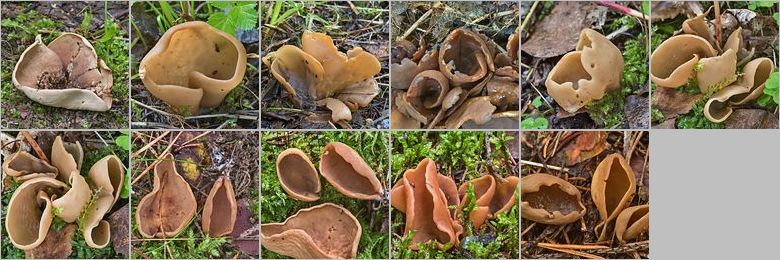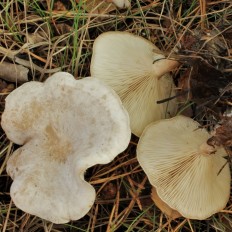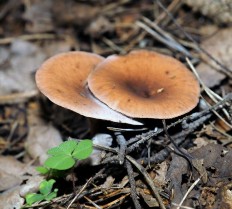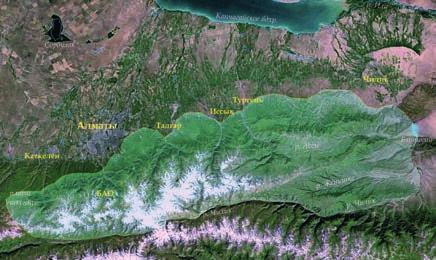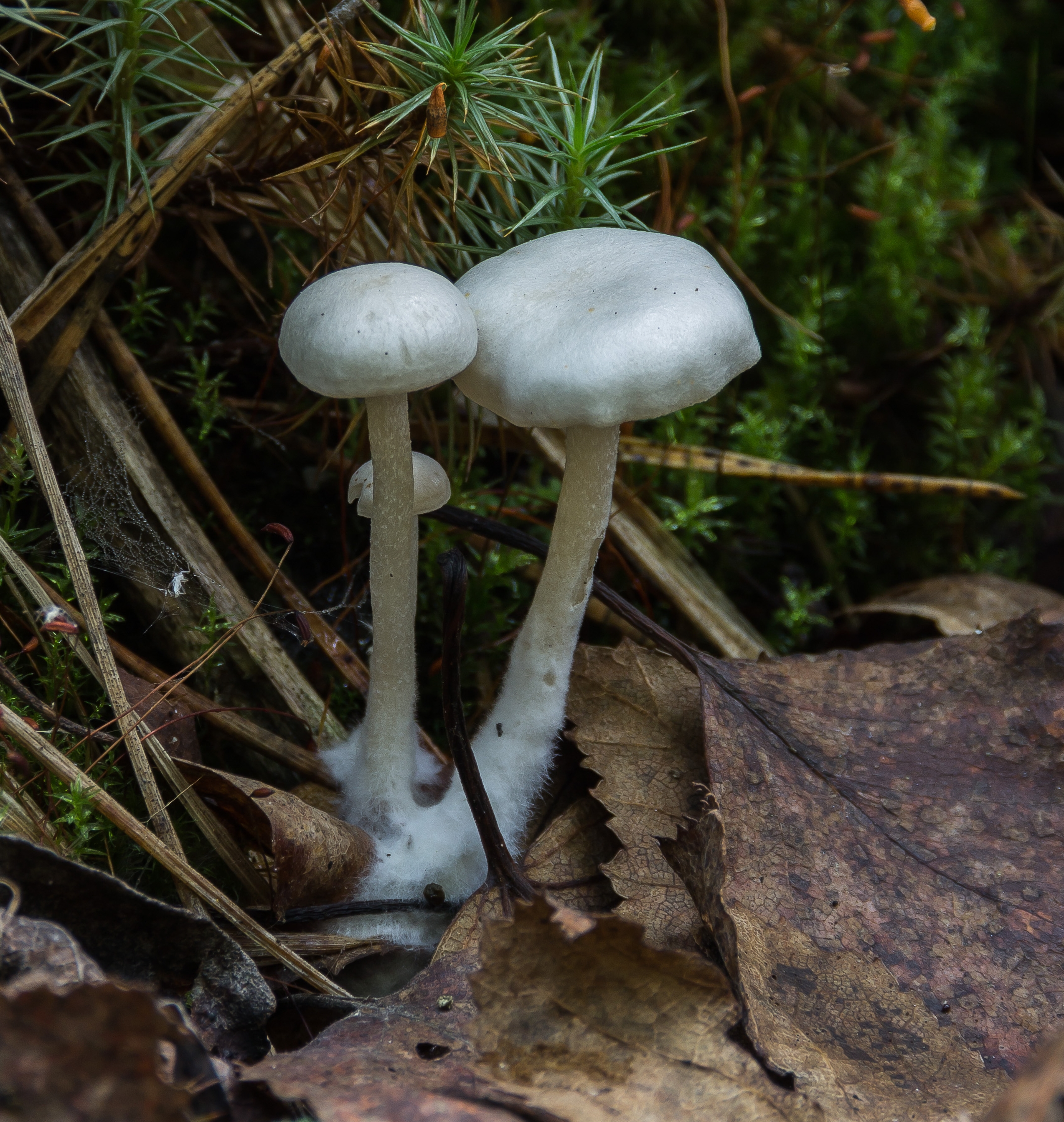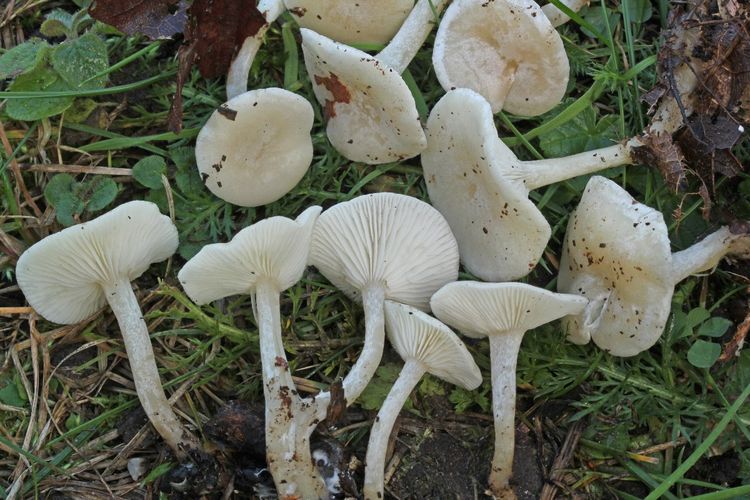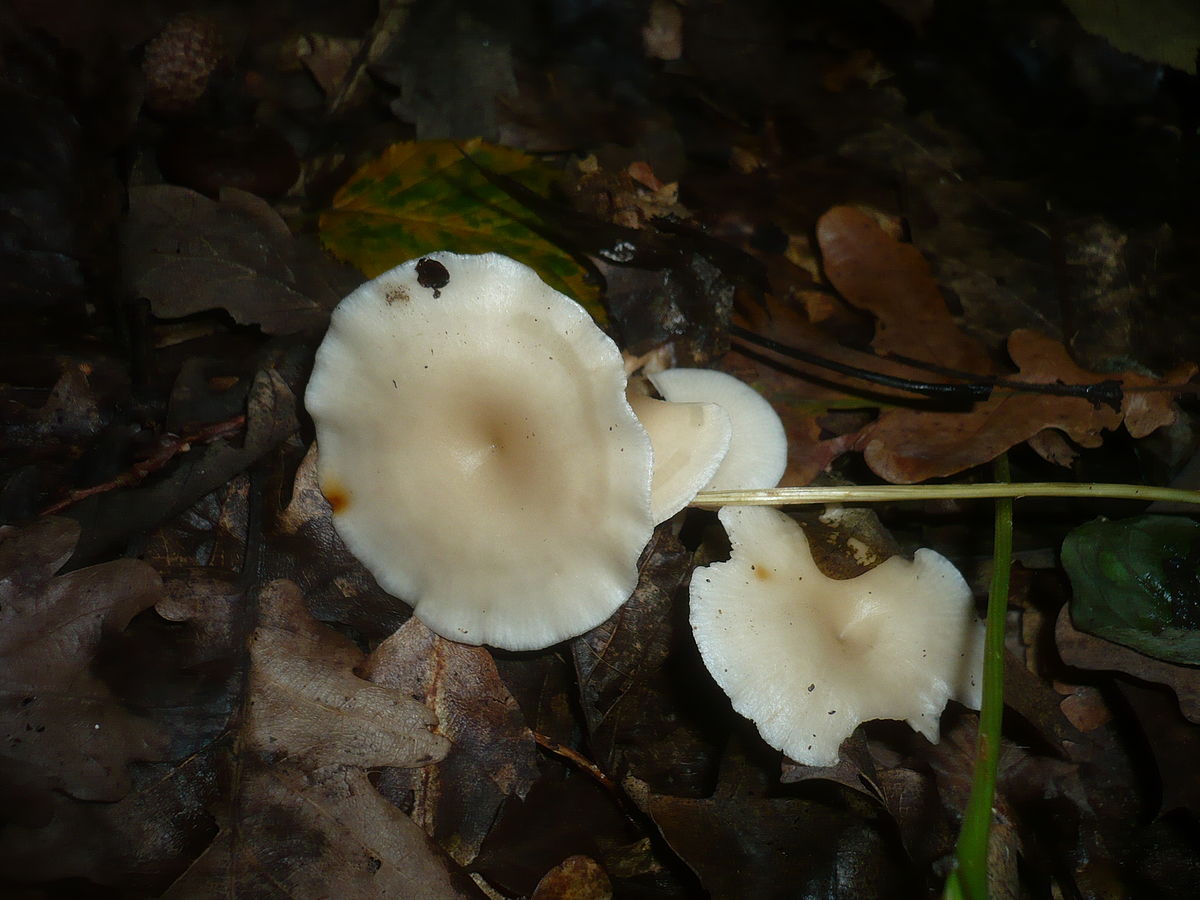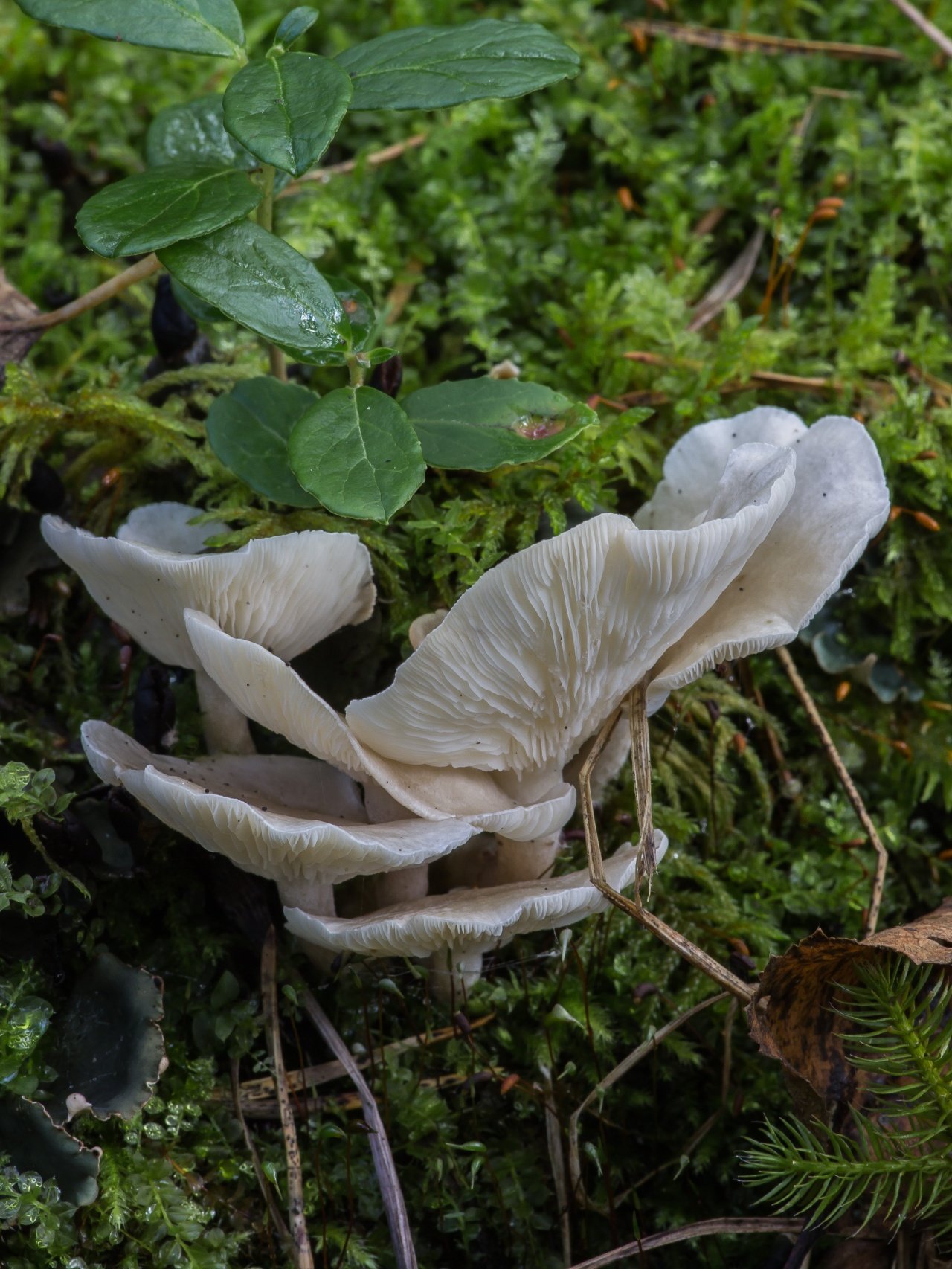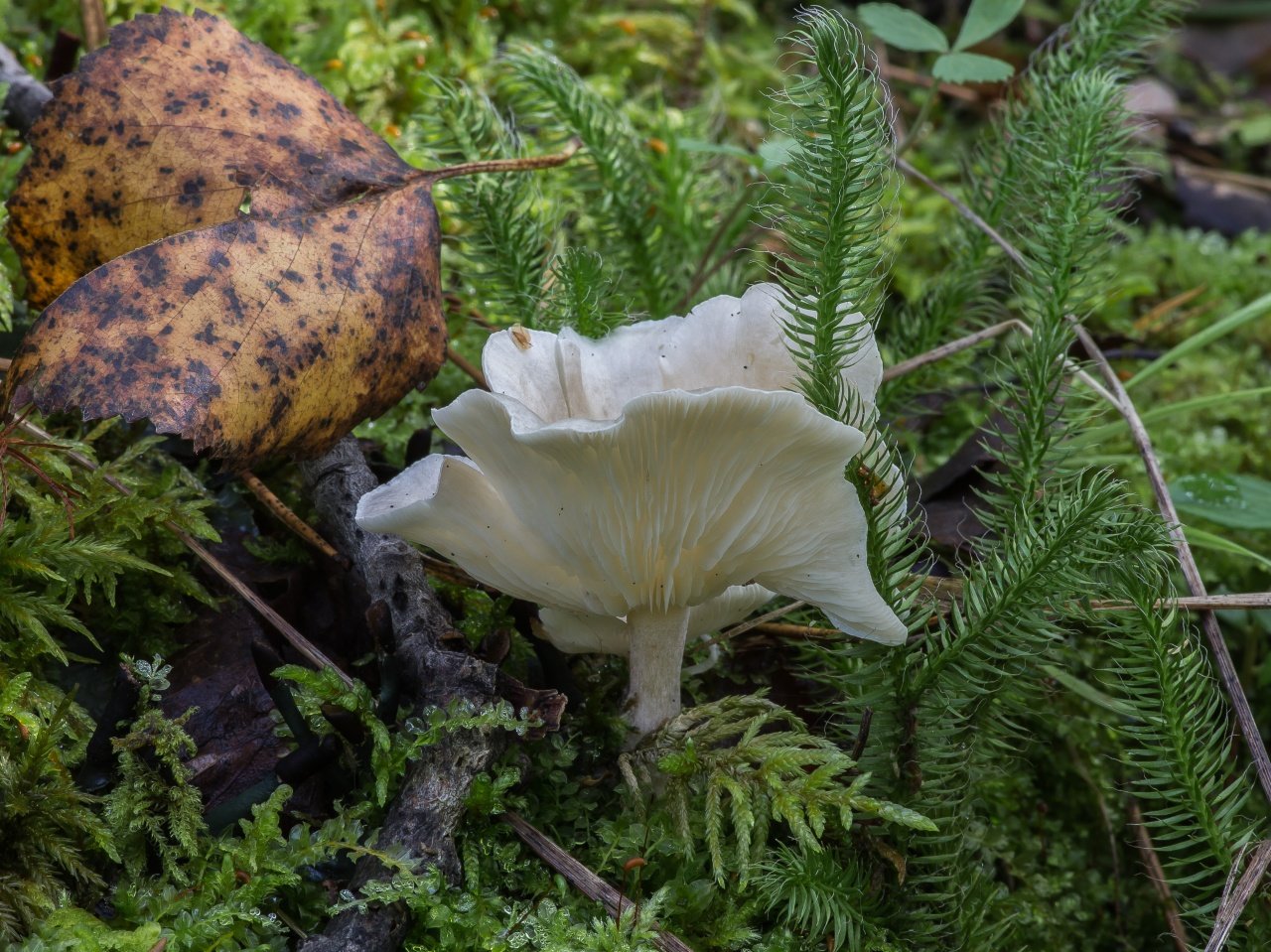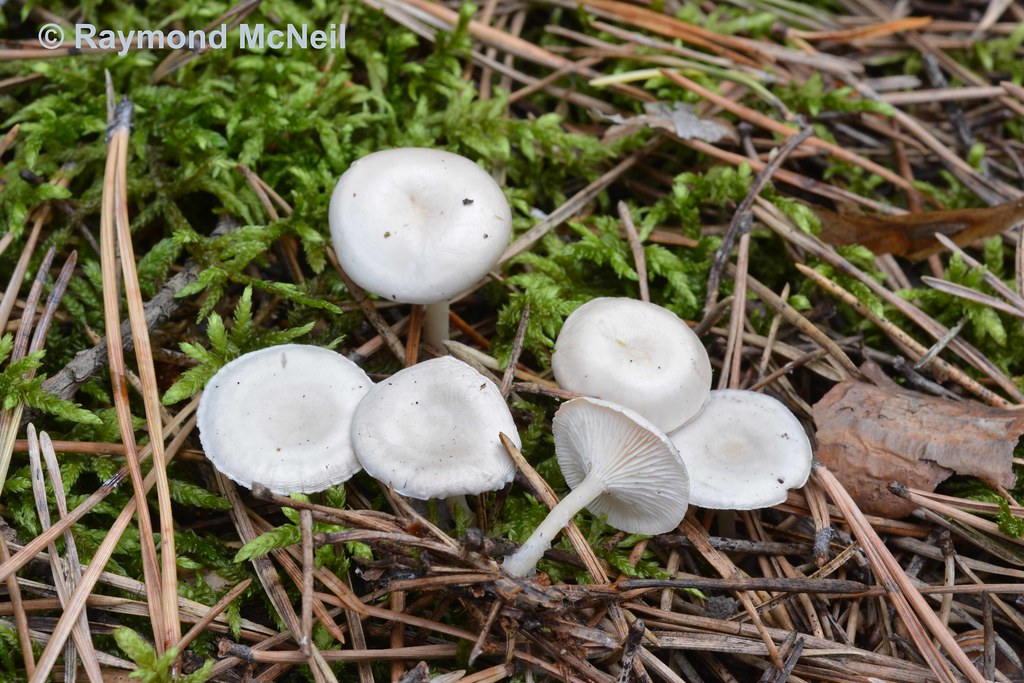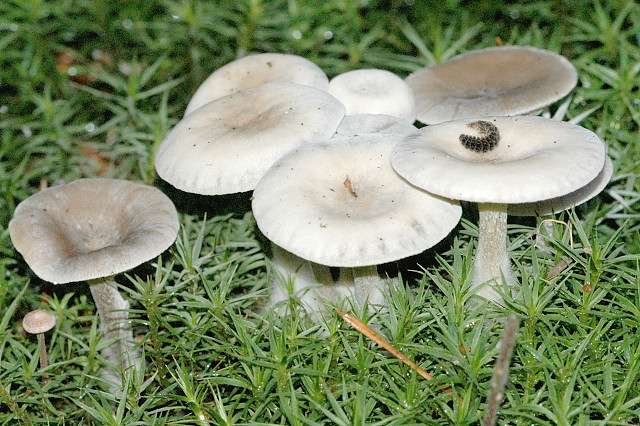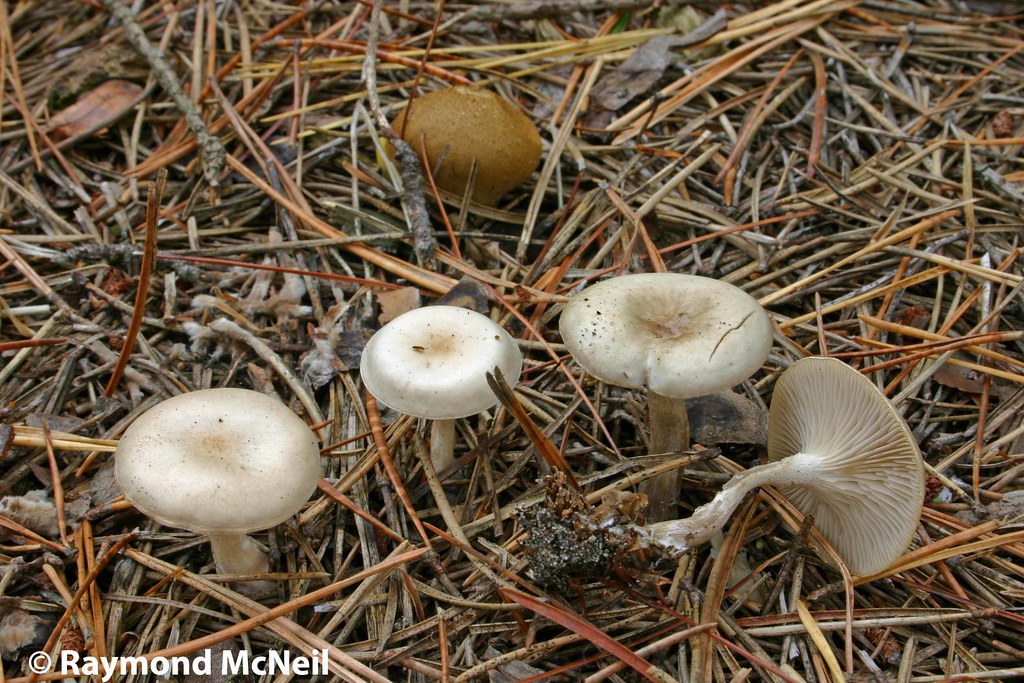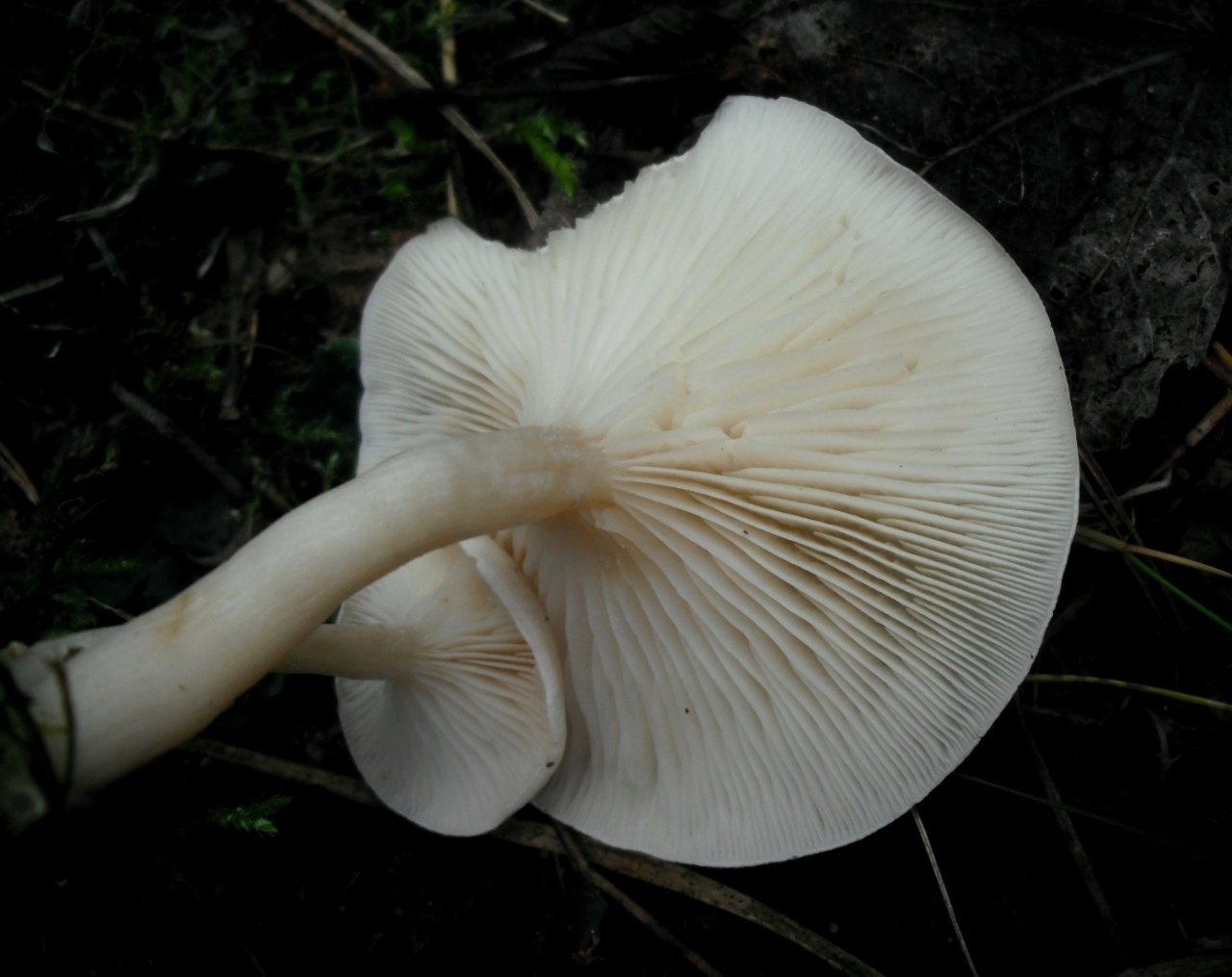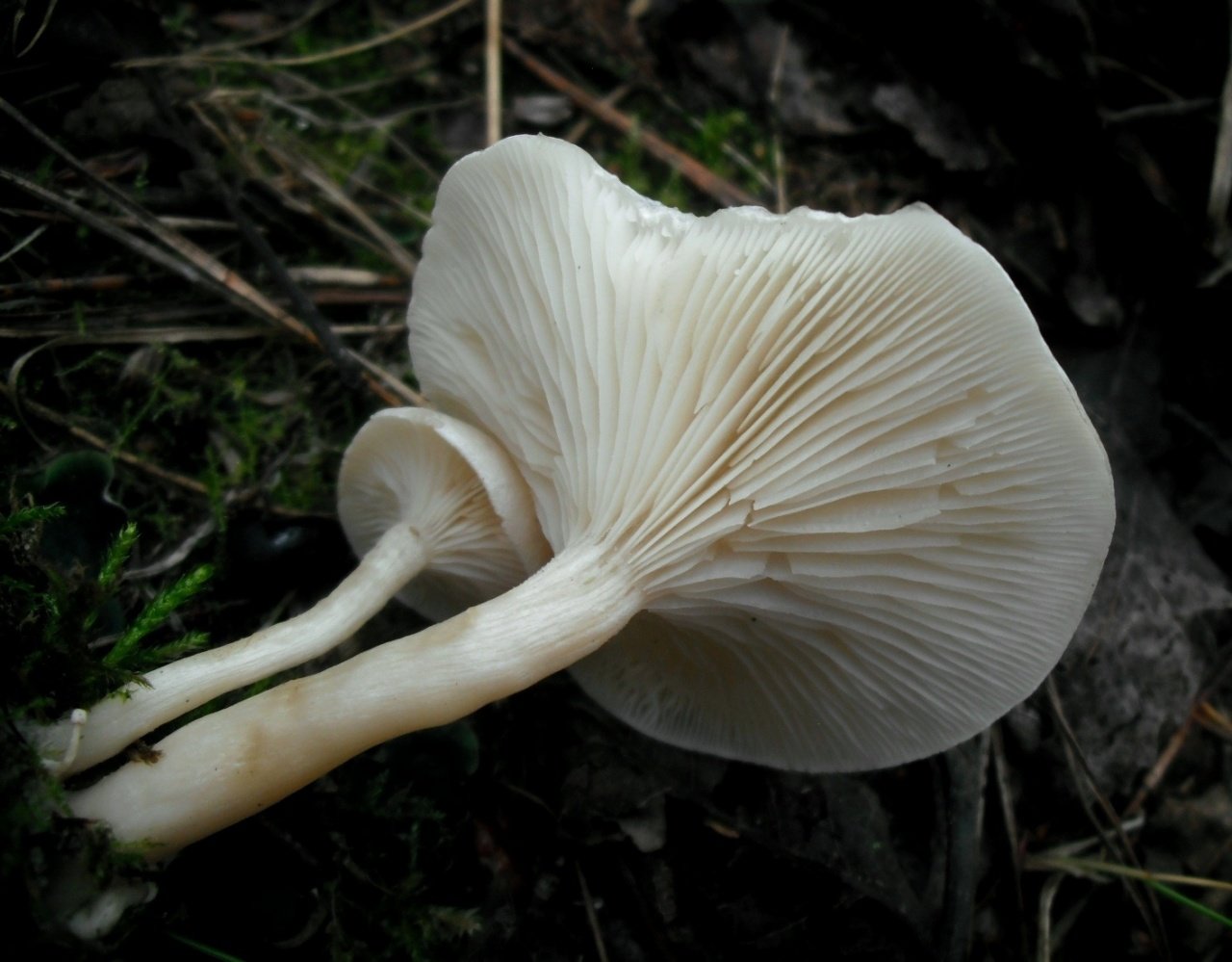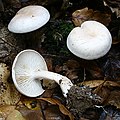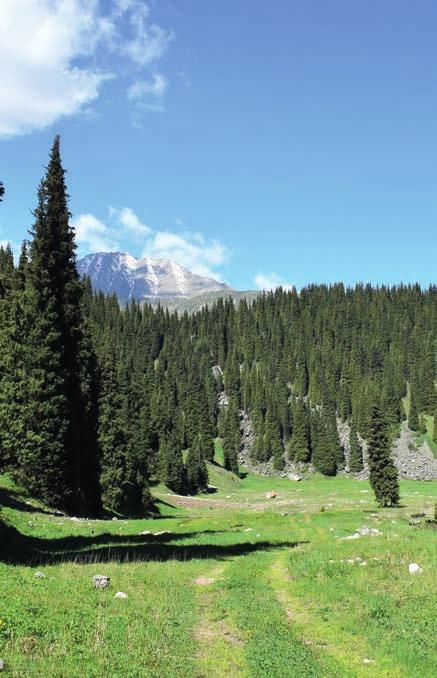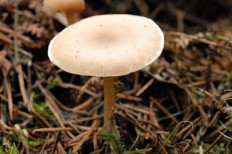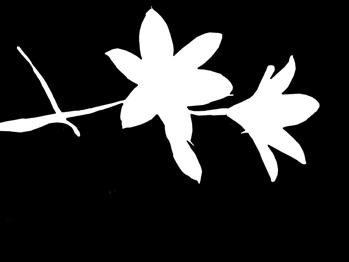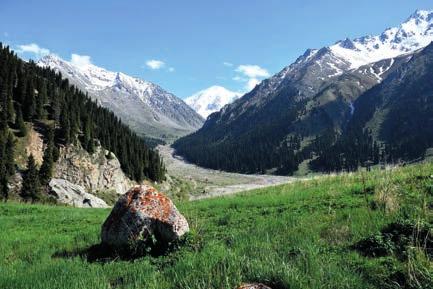Whitish talker
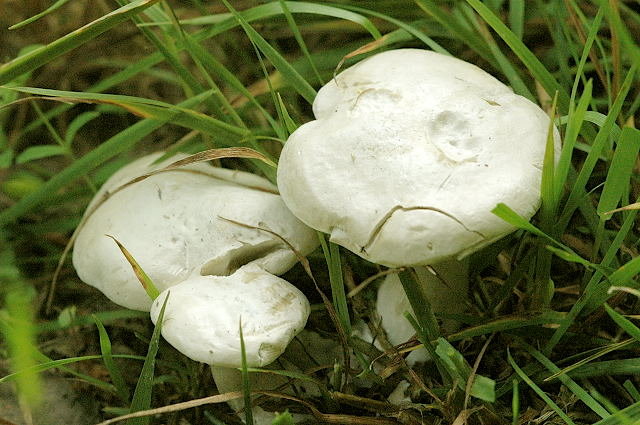
Furrowed talker
Whitish, bleached, or discolored (Latin Clitocybe dealbata), also reddish, or furrowed (Clitocybe rivulosa) - a type of mushroom included in the Clitocybe genus of the Tricholomataceae family.
Whitish talker grows on soil or on a litter in places with a grass cover - in meadows and pastures or on forest edges, clearings and clearings in deciduous and mixed forests, as well as in parks. Fruit bodies appear in groups, sometimes very large; form "witch circles". Distributed in the temperate zone of the Northern Hemisphere. The season is from mid-July to November.
The cap of the talker is whitish ∅ 2-6 cm, in young mushrooms it is convex, with a turned-up edge, later it is spread, in old mushrooms it is flat or depressed, often with a wavy edge. The color of the cap varies from powdery white and whitish-grayish in young mushrooms to buffy in mature ones. Mature mushrooms have vague grayish spots on the cap. The surface of the cap is covered with a thin powdery coating, which can be easily removed; in wet weather it is slightly slimy, in dry weather it is silky and shiny; when dry, it cracks and becomes lighter.
The pulp is thin-fleshy (3-4 mm thick on the disc of the cap), elastic and fibrous, whitish, does not change color when cut. The taste is inexpressive; the smell is mealy.
The leg of the talker is whitish, 2-4 cm long and 0.4-0.6 cm ∅, cylindrical, slightly tapering towards the base, straight or curved, solid in young mushrooms, later hollow; the surface is whitish or grayish, in places covered with nut-colored spots, darkening when pressed, longitudinally fibrous. Plates are frequent, whitish, later grayish-whitish, at maturity acquire a light yellow color, descending to the pedicle, 2 - 5 mm wide. Spore powder is white. Spores 4–5.5 × 2–3 µm, ellipsoidal, smooth, colorless.
Deadly poisonous mushroom!
The content of muscarine in the whitish govorushka is higher than in the red fly agaric. Muscarine, contained in the fruiting bodies of the whitish talker (as well as in the fruiting bodies of related species, for example, Clitocybe phyllophila), can cause severe poisoning, which manifests itself 15-20 minutes after ingestion, increased secretion of saliva and tears, sweating, in large doses - weakening of the heart rate, a sharp drop in blood pressure, respiratory failure, severe vomiting and diarrhea. Poisoning symptoms usually begin to subside after two hours. Fatalities are rare. The antidote for muscarine poisoning is atropine and other M-anticholinergics.
It grows on soil or litter in places with grass cover - in meadows and pastures or on forest edges, clearings and clearings in deciduous and mixed forests, as well as in parks. Fruit bodies appear in groups, sometimes very large; form "witch circles". Distributed in the temperate zone of the Northern Hemisphere.
The season is from mid-July to November.
In the literature, two species are often distinguished - Clitocybe rivulosa with a pinkish cap and blades and a short stalk and Clitocybe dealbata with a grayish coloration and a longer stalk. These factors turned out to be insufficient for separation, the color of hygrophonic talkers depends significantly on the degree of wetting. Molecular genetic studies have also come to the conclusion about one polymorphic species.
Taxonomy
View Clitocybe candicans sometimes it is divided into several narrower types with blurred boundaries. Clitocybe gallinacea sometimes used in relation to mushrooms with widely adherent plates and a bitter taste.
Synonyms edit code
- Agaricus candicans Pers., 1801: Fr., basionym
- Agaricus gallinaceus Scop., 1772
- Agaricus umbilicaris J.F. Gmel., 1792, nom. nov.
- Agaricus umbilicatus Bolton, 1788, nom. illeg.
- Clitocybe aberrans Velen., 1939
- Clitocybe alboumbilicata Murrill, 1915
- Clitocybe candens Murrill, 1916, nom. superfl.
- Clitocybe candicans (Pers.) P. Kumm., 1871
- Clitocybe gallinacea (Scop.) Gillet, 1874
- Clitocybe gossypina Velen., 1939
- Clitocybe tenuissima Romagn., 1954
- Omphalia candicans (Pers.) Gray, 1821
- Omphalia gallinacea (Scop.) Quél., 1886
Inedible talkers
Bent (red)
This variety is one of the largest and most popular talkers: the size of its cap can reach twenty centimeters. The length of the leg is 15 centimeters, and the thickness of the leg does not exceed three centimeters.
Orange (kokoshka)
The people also call it a false fox. Unlike a real chanterelle, the orange talker is characterized by bright colors and dense flesh.
The diameter of this variety is 2-5 centimeters.
Color palette: orange-ocher, pale yellow and bright yellow colors. The length of the leg reaches five centimeters.
Giant
The cap of this mushroom varies between 15-30 centimeters. The length of the leg reaches eight centimeters, and the thickness reaches four centimeters.
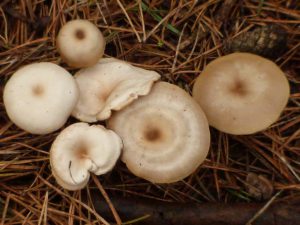
Despite the fact that this variety grows according to the principle of "witch circles" (this is how poisonous mushrooms grow), it is considered suitable for food.
In addition to the listed species, the category of edibles includes: goblet, funnel, smoky, smoky white, clavate, fragrant, winter, fragrant and others.
- A waxy govorushka is characterized by: a dirty white color, round stains, an unpleasant odor and a tubercle in the center.
- The grayish talker is very similar to the winter talker, but, unlike the second, it is inedible. This variety is also called a pale-colored talker. The diameter of her cap is five centimeters. The leg has a rolling coloring, i.e. in one part it has a grayish-white bloom, and in the other part it is grayish-brown. The mushroom pulp does not have any smell.
- The whitish talker belongs to the category of poisonous mushrooms containing muscarine. The hat of this variety does not have a large size: it can reach a maximum of four centimeters in diameter. The center of the cap is a pale red tint, and the edges of the cap are pale gray. The mushroom pulp has a pleasant aroma that confuses people.
In addition to the listed species, the inedible category includes: brown-yellow, inverted, translucent, reddish, hardwood, and so on.
Waxy talker (Latin Clitócybe phyllóphila)
Poisonous and inedible mushrooms
Leaf-loving, waxy, or grayish (lat. Clitócybe phyllóphila) is a deadly poisonous species of mushrooms included in the genus Govorushka of the Ryadovkovye family. This type of talker grows in mixed and coniferous forests. They mainly choose sandy soils. It usually grows in rather large groups, often tight, or forms rows or "witch's rings". It grows on decaying foliage and needles in forests. The talker is not confined to a certain type of forest. You can find these mushrooms among the grass. Waxy talkers bear fruit from July to October.
One of the most poisonous species of the genus, containing high concentrations of muscarine. The waxy govorushka contains a large amount of muscarine, which can cause fatal poisoning. The poison of the waxy gossip affects the nervous autonomic system. After 25 minutes after the use of waxy talkers, symptoms of poisoning appear. The victim has an increase in blood pressure, dizziness, headache, vomiting, limbs begin to tremble, and cardiovascular activity slows down. A dose of 10-80 grams of fresh mushrooms for humans becomes fatal.
Small to medium-sized terrestrial lamellar cap mushroom without cover. The cap of adult mushrooms is 2-9.5 (sometimes up to 11) cm in diameter, in young mushrooms it is flat-convex, then flat, with age it becomes depressed and funnel-shaped, but the edge is tucked for a long time.
The color of the mushroom is completely white. The diameter of the grayish talker hat reaches 10 centimeters. The shape of the cap is convex at a young age, and over time it turns into an open one. Sometimes a wide hump-shaped tubercle is noticeable in the center. There are concentric watery circles on the surface of the cap. The edges of the cap are turned away, wavy, fluffy, sometimes they can be torn.
The pulp is firm, with a pleasant smell and taste. The color of the pulp is white. The plates are narrow, they are often located, descend along the leg. The color of the plates is white, it can also be grayish. Spores are smooth, ellipsoidal. Spore white powder.
The talker's leg is grayish up to 3 centimeters long, its diameter is 0.5-1.5 centimeters. Its shape is cylindrical, more often straight, but sometimes it is slightly curved. The pedicle is slightly thickened towards the base. The surface of the leg is smooth and the base is fluffy. The leg is dense in structure.
The whitish talker outwardly is very similar to the waxy talker. The whitish talker is also a deadly poisonous mushroom. The diameter of its cap reaches 6 centimeters, and the shape of the cap changes from convex to flat or depressed.
The cap is covered with a mealy bloom, and in damp weather it becomes a little slimy. The color of the cap is whitish-gray. The pulp is firm and thin. The leg reaches 4 centimeters in length, and up to 0.6 centimeters in thickness. The color of the leg is grayish or whitish.
The whitish talker grows on the edges, pastures, meadows, that is, in places with grassy cover, as well as in parks, deciduous and mixed forests. Fruit bodies are often found in large groups. They bear fruit from July to November. This deadly poisonous mushroom contains more muscarine than red fly agaric. This poison causes severe poisoning, which after 15 minutes.
The pendant is also outwardly similar to the waxy gossip. The danger of such a similarity is that the wild rose is an edible mushroom of the Entolomaceae family, the genus Clitopilus. The diameter of the pendant's cap reaches 10 centimeters. By old age, the convex cap becomes almost funnel-shaped. The color of the cap is yellowish-gray, but it is quite variable. The pulp is thick, firm, white. The leg reaches a height of 6 centimeters, it is solid and curved. The color is the same as the hat.
Hangers bear fruit from July to September. They grow everywhere, in different types of forests. They prefer acidic soils.
They settle among the grass. They form mycorrhiza with pink-colored tree species. According to some sources, these edible mushrooms are considered to be of high value, but they have a strong flour smell that not everyone likes.
Description of appearance
It is a beige mushroom with a flat rounded cap and a narrow, regular, cylindrical stem.
Hat
Small in size, usually reaches from 3 to 5 cm in diameter. In young mushrooms, it has a convex shape with a tubercle in the middle and curved edges, after which it becomes completely flat, and a small depression forms in the center. The color is ash, beige, grayish or light brown.
Also small - up to 3 cm in height, less than 1 cm in diameter. Colored in light brown tones, cylindrical in shape, narrow. The surface is smooth, bare, without rings and other remnants of the mushroom blanket.
Whitish talker
Let's go to rest together
If you are going to go to rest in these places for mushrooms or fishing or just sunbathe, then invite like-minded people to your company, it is more interesting to relax together.
All posted ads can be viewed in the Travel Book
Alekseevsky forest
A small group of friends | Going to a famous place looking for a company | There are places in the car | We are going to the woods for Alekseevka, today. To see what there is now from the mushrooms, we will stop by the Silver Spring. Join whoever wishes.
Other offers:
Hunting for muskrat
| Video (click to play). |
Saiga hunting
Roe deer hunting
White hare hunting
Badger hunting
Sika deer hunting
Wild boar hunting
Fox hunting
Tourist Saratov, 2018-2020. All rights reserved.
The poisonousness of the whitish talker
The whitish govorushka contains a natural toxin - mycorin. Even in deadly fly agarics, the concentration of this poison is lower in comparison with the talker. Mycorin can cause very serious poisoning. In this case, the symptoms appear very quickly, after eating the mushrooms.
Already after 20 minutes, after poisonous elements enter the esophagus, a person's sweating increases and an intensive production of saliva is observed. With a large dose of eaten mushrooms, the pulse slows down, heart beats become less frequent, blood pressure decreases and the respiratory process becomes more complicated. Among other things, poisoning is accompanied by severe diarrhea and vomiting. These symptoms begin to disappear within 1-2 hours. But in extremely rare cases, deaths are observed.
Similar species
The following types are similar to the whitish govorushka:
The tree-loving talker is found in summer and autumn in deciduous and mixed forests. These mushrooms grow in groups on decaying hardwood, and sometimes conifers. In more rare cases, wood-loving talkers can be seen on living trees. They grow in small groups of 2-3 specimens.

The tree-loving talker has an excellent smell. The spores of this fungus are wide. The color of young specimens is completely white, and with age it becomes yellow-beige.
The fragrant talker has a hat with a diameter of 3-6 centimeters. At first, the shape of the cap is convex, but over time it becomes concave, sometimes the edges are wavy. The color is yellowish-gray, pale ocher, grayish or fawn. The plates are whitish, with age they turn gray-brown. The leg length ranges from 3 to 5 centimeters and the width is 0.5-1 centimeters. The leg is solid, cylindrical, with a pubescent base. The color of the leg is the same as the hat.
These mushrooms bear fruit from September to October in mixed and coniferous forests. Bloody talkers are little known mushrooms, but they are considered edible. Before use, they should be boiled for at least 10 minutes.

Negative consequences
In order not to face harmful manifestations emanating from talker mushrooms, it is worth remembering the following rules:
- Edible mushrooms do not harm the body, but only if the person is not allergic.
- Children and the elderly should limit the use of these products, and in some cases stop altogether.
- Do not eat edible mushrooms that grow in polluted and toxic places.
- Only organic products should be eaten.
At the end of this article, we suggest that you familiarize yourself with the photos of talker mushrooms.
Beneficial features
One hundred grams of raw mushroom contains:
- Proteins, polypeptides - 3.7 grams;
- Carbohydrates - 1.1 grams;
- Triglycerides - 1.7 grams.

It is worth noting that talker mushrooms have useful and healing qualities:
- Improve the immune system;
- Normalize the digestive tract system;
- They are part of medicines intended for the treatment of the respiratory system;
- Helps fight cholesterol;
- Restore the normal functioning of the bladder;
- They have antibacterial properties;
- Remove slags and toxins.
Of course, the beneficial effect is achieved only with the skillful use of this product. You should not overuse mushrooms, no matter what purpose you pursue.






